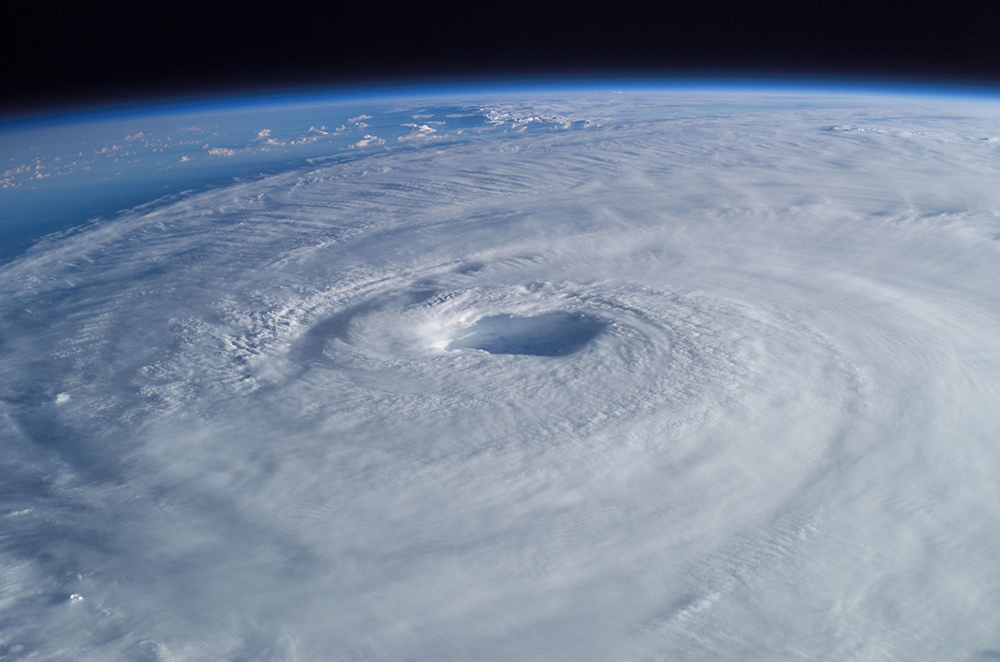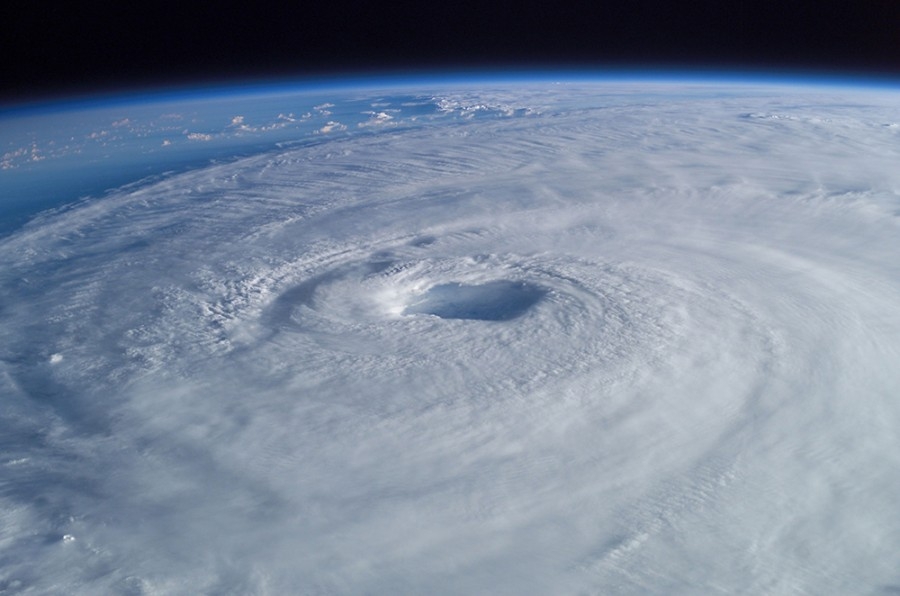 Hurricane Isabel in 2003. (Photo: NASA) |
After three relatively quiet years, forecasters predict we’ll see something close to a “normal” year in terms of hurricane activity in the Atlantic Ocean this year — 10 to 16 named storms with up to four of those considered major hurricanes.
“Major” means a Category 3, 4 or 5 storm, a vernacular we wouldn’t have without School of Civil and Environmental Engineering alumnus Herbert Saffir.
In fact, it’s his name, along with his friend Robert Simpson’s, that gives the hurricane classification system its official title: the Saffir-Simpson Hurricane Wind Scale.
|
SAFFIR-SIMPSON HURRICANE WIND SCALE |
||
|
Category 1 | Sustained Winds: 74-95 mph Very dangerous winds will produce some damage: Well-constructed frame homes could have damage to roof, shingles, vinyl siding and gutters. Large branches of trees will snap and shallowly rooted trees may be toppled. Extensive damage to power lines and poles likely will result in power outages that could last a few to several days. |
||
|
Category 2 | Sustained Winds: 96-110 mph Extremely dangerous winds will cause extensive damage: Well-constructed frame homes could sustain major roof and siding damage. Many shallowly rooted trees will be snapped or uprooted and block numerous roads. Near-total power loss is expected with outages that could last from several days to weeks. |
||
|
Category 3 (major) | Sustained Winds: 111-129 mph Devastating damage will occur: Well-built framed homes may incur major damage or removal of roof decking and gable ends. Many trees will be snapped or uprooted, blocking numerous roads. Electricity and water will be unavailable for several days to weeks after the storm passes. |
||
|
Category 4 (major) | Sustained Winds: 130-156 mph Catastrophic damage will occur: Well-built framed homes can sustain severe damage with loss of most of the roof structure and/or some exterior walls. Most trees will be snapped or uprooted and power poles downed. Fallen trees and power poles will isolate residential areas. Power outages will last weeks to possibly months. Most of the area will be uninhabitable for weeks or months. |
||
|
Category 5 (major) | Sustained Winds: 157 mph or higher Catastrophic damage will occur: A high percentage of framed homes will be destroyed, with total roof failure and wall collapse. Fallen trees and power poles will isolate residential areas. Power outages will last for weeks to possibly months. Most of the area will be uninhabitable for weeks or months. Source: National Hurricane Center |
||
Saffir’s five-category system correlates a storm’s wind speeds with the kind of damage those winds will inflict on structures. For most people who live along the coast in the southern United States, they’re the gospel by which you decide whether an approaching storm merits plywood on the windows and evacuation or a trip to the store for bottled water, batteries and canned goods so you can hunker down and wait it out.
But 50 years ago, a Category 1 storm might have been simply called a “minor” hurricane and a Category 5 a “major” one. Saffir realized the problem when he was writing a report commissioned by the United Nations.
“They wanted a study on low-cost housing throughout the world that was subject to tropical cyclones, hurricanes,” he told the South Florida Sun-Sentinel in 2001. “That’s when I got into setting forth rules for buildings, small buildings, residential buildings, and I also set up the hurricane scale, because there was no scale that corresponded to the [well-known] earthquake scales.”
The U.N. eventually published Saffir’s report, including the hurricane wind scale that ended up buried more than 150 pages in, he told a Miami Herald reporter in 2005.
“I just threw it in at the end of the report,” Saffir said. “I didn’t think much of it.”
Between his work on the report in the late ‘60s and the report’s publication, however, Saffir had shared his hurricane wind scale with a friend at the National Hurricane Center.
Robert Simpson was director of the center then, and he liked what Saffir had put together.
“When I first came down to the Hurricane Center in 1967, I tried to come to grips with how we could do a better job of communicating,” Simpson told the Mariners Weather Log in 1991. “That’s very difficult; scientists communicate with each other very easily, but a scientist trying to communicate with a person who is a non-scientist on a technical problem is very difficult at times.”
Simpson added descriptions of the potential damage from storm surge for each of Saffir’s categories and thus was born the Saffir-Simpson scale.
Initially, National Hurricane Center forecasters used the scale only internally. But before long, they started including it in guidance meant for government agencies and emergency managers. By 1975, because it made communicating the dangers of a storm so much easier, the scale had gone public.
In addition to developing the hurricane scale, Saffir also widely receives credit for writing and unifying building codes across South Florida, where he was a county engineer for many years. The work made him an expert in how hurricane-force winds damage structures.
“I can’t stress enough the importance of a strong building code and strong enforcement of that code,” Saffir said in that Miami Herald interview. “The truth is, you can write any code you want, but without the proper enforcement, it’s not going to work.”
That interview was in 2005. Saffir, who graduated from Georgia Tech in 1940, was 88 years old at the time. He died two years later.
But every year from June 1 to November 30 — the Atlantic hurricane season — his legacy lives on in the system he created that has forever changed how we understand the strength of tropical cyclones and how we talk about them.

